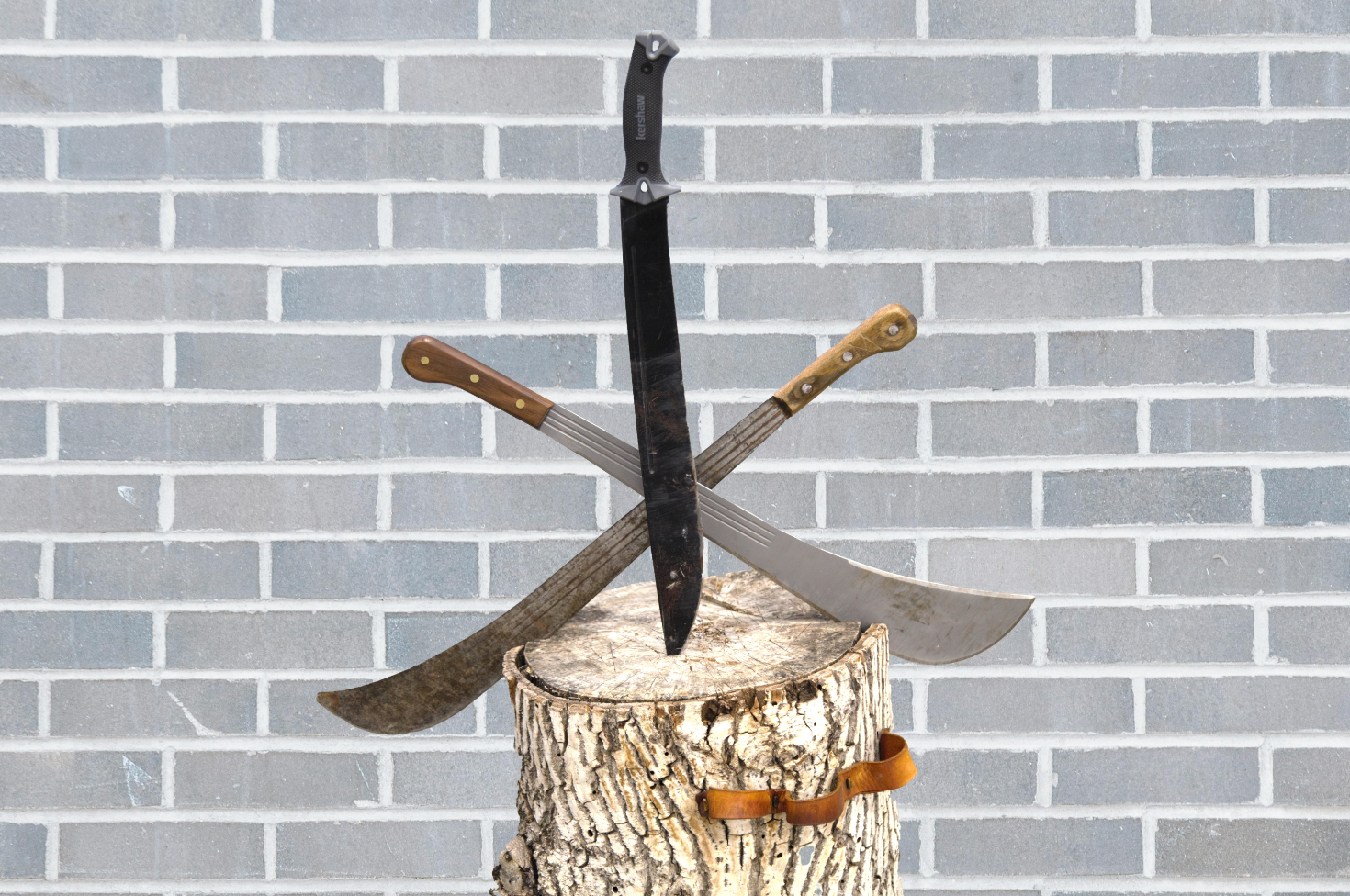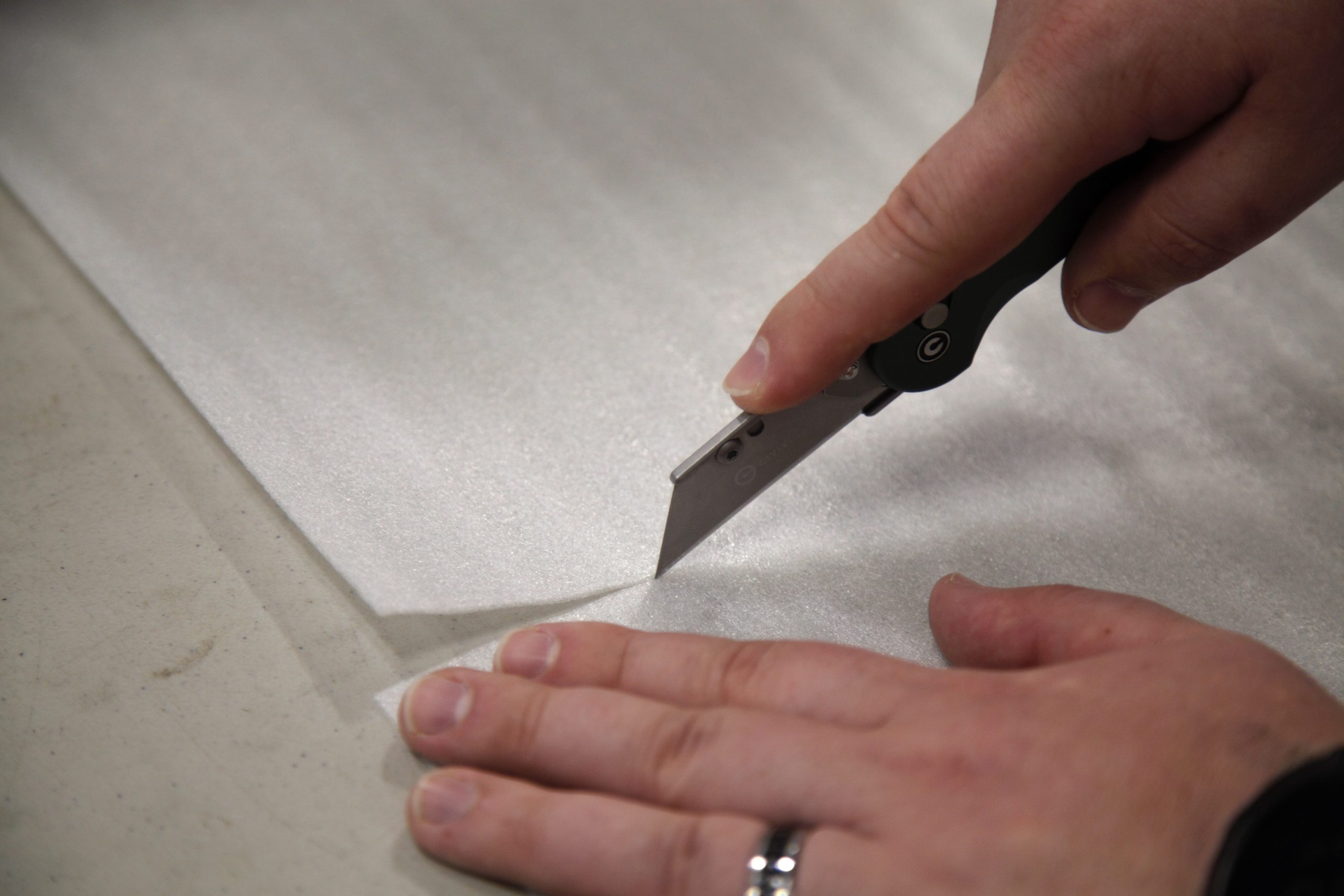
If you are new to knives or unfamiliar with some of the different materials used in knife making, micarta is a composite material composed of a porous material like canvas, denim or burlap and resin. Its rugged construction makes it great for knife handles and handle scales. Micarta has quickly grown to be one of the most popular handle materials found on today’s knives. It’s found on bushcrafting knives, tactical knives and everyday carry knives thanks to its grippy texture and wide range of color options. For this article we wanted to try our hand at making some micarta. Read on to see how we did it and what we ended up with.
What You’ll Need

There are many ways to make micarta, but they all have a few things in common. Making micarta requires three things: resin/epoxy, material, and pressure.
Below you will find a list of the materials we used for our micarta. These are by no means exactly what you will need but having the right supplies can make all the difference.
- Fiberglass Resin or Jewler’s Epoxy
- Wood for building your form. (We used a standard 2×4 for ours.)
- MDF or Particle Board (3/4″ thickness recommended)
- Wood Screws
- Clear Packing Tape
- Large C-Clamps
- A Mixing Cup
- Mixing Sticks
- A Putty Knife or Spatula
- Porous Cloth, Canvas, Denim, etc.
- Eye Protection, Gloves and a Mask/Respirator
Safety Note: Mixing epoxy/resin can be harmful to your health. Wear all necessary personal protective equipment and make your micarta in a well-ventilated area.
Step 1: Prepare Your Materials and Build Your Mold

Making micarta is a bit of a fast but precise process. It requires having a plan, prepping your materials and working as faster than your resin/epoxy can set. For our micarta, we used our 2×4, wood screws, packing tape and MDF to make a mold. The 2×4 was used as a frame for the mold and the MDF served as a bottom lid and a press. We lined the inside of the mold with packing tape so the micarta would release easier when the resin cured. We then cut our denim into squares that would fit well into the form and set them aside for later.
Step 2: Mix Resin


Measure and mix your resin in the plastic mixing cup. For our micarta we used 8oz. resin and 80 drops of hardener per the instructions on the resin container. These amounts will vary depending on which resin/epoxy you use. The amount we used allowed for us to saturate our denim and then some, but it was better to mix too much resin than not have enough. Once the hardener is added to the resin, you need to start layering your micarta as the resin will begin to cure in about 10 minutes.

Step 3: Layer Materials


Begin by pouring a 1.5” drop of resin into the bottom of the form and placing a piece of fabric (or other material) on top of the resin. Pour more resin on top of the fabric and use the putty knife or spatula to spread and saturate the resin into the fabric. When that layer is saturated, add another layer of fabric and more resin, then repeat.

Continue this process until the desired thickness is achieved. For our micarta, we alternated light and dark layers of denim to give it a more pronounced layered look when it was finished and used 12 sheets of material to get the desired thickness. For thicker handle scales, use more material or vice versa.
Step 4: Add Pressure


Now that we’ve layered our materials, the next step is to add pressure. For our micarta, we used a piece of MDF that was cut to fit inside the form we made and pressed it with some large C-Clamps. It is important to use a piece of wood thick and sturdy enough to apply even pressure to the materials. We noticed that our MDF wasn’t quite thick enough and it caused some indentations to be formed while the micarta cured. In our situation it didn’t matter much because we have plans to make thinner scales but keep the pressure in mind when you make yours. We recommend using a piece of MDF or particle board ¾” or thicker to press your micarta.

Step 5: Wait

This step is easier for some than it is for others. If you’re anything like us, you will likely be excited to see the results of your handy work. Resist the urge to crack open your form for at least a day and a half. The resin needs time to harden and cure all the way through the block of micarta. If you’re having a tough time knowing what to do while you wait, check out this link. —> https://www.bladehq.com/cat–New-Arrivals–153 😉
Step 6: Release Your Micarta

This step is rather straight-forward. Simply release the c-clamps and pop your micarta out of the mold. In our case, we had to unscrew our form to get everything to fully release, but results will very.
If your micarta turns out like ours, it will likely have a smooth, resin-like finish. Hopefully your block is one consistent thickness. You can now cut it into smaller blocks, make it into handle scales, use it as a paper weight, etc. To give your micarta that rugged texture we find on production micarta from our favorite manufacturers simply sand away the top layers of resin until you achieve that matte finish.

Final Thoughts
Making micarta for the first time is a bit of a learning process. Depending on the material you choose to make it out of the amount of resin you use and the time it takes to cure may vary. We suggest testing new materials in a small batch and making adjustments as needed. This project was easier than we initially thought it would be. It’s easy to make micarta at home and it really doesn’t require and special tools. If you wanted to make micarta in an even simpler way you could layer your materials between two boards and put a couple cinder blocks or other heavy objects on top.
And there you have it; the quick and dirty way to make micarta at home. We would love to see your creativity. Follow us on Instagram @BladeHQ and use the hashtag #BHQmicarta to show us what you make!


Learn more
If you’ve made it this far, thanks! As we continually producing new content for our YouTube channel, it’s important to check back frequently. While we don’t quite have a “How to Make Micarta” video yet, we have some other great videos to learn about different knife mods you can do right at home. Check out this awesome video that shows how to use Rit Dye to change the color of your knife scales.
Or if dying knife scales isn’t advanced enough for you, check out this video on at home titanium anodization.
Last, maybe knife mods and DIY projects aren’t your thing, or maybe you just need some inspiration. Blade HQ has a large selection of knives with micarta handles and handle scales. Click the button below to check them out!
OTHER KNIFE GUIDES
Still in that information gathering phase? We’ve got a lot more lists of our Best Knives! Happy hunting and may you find that one special knife of your dreams!



